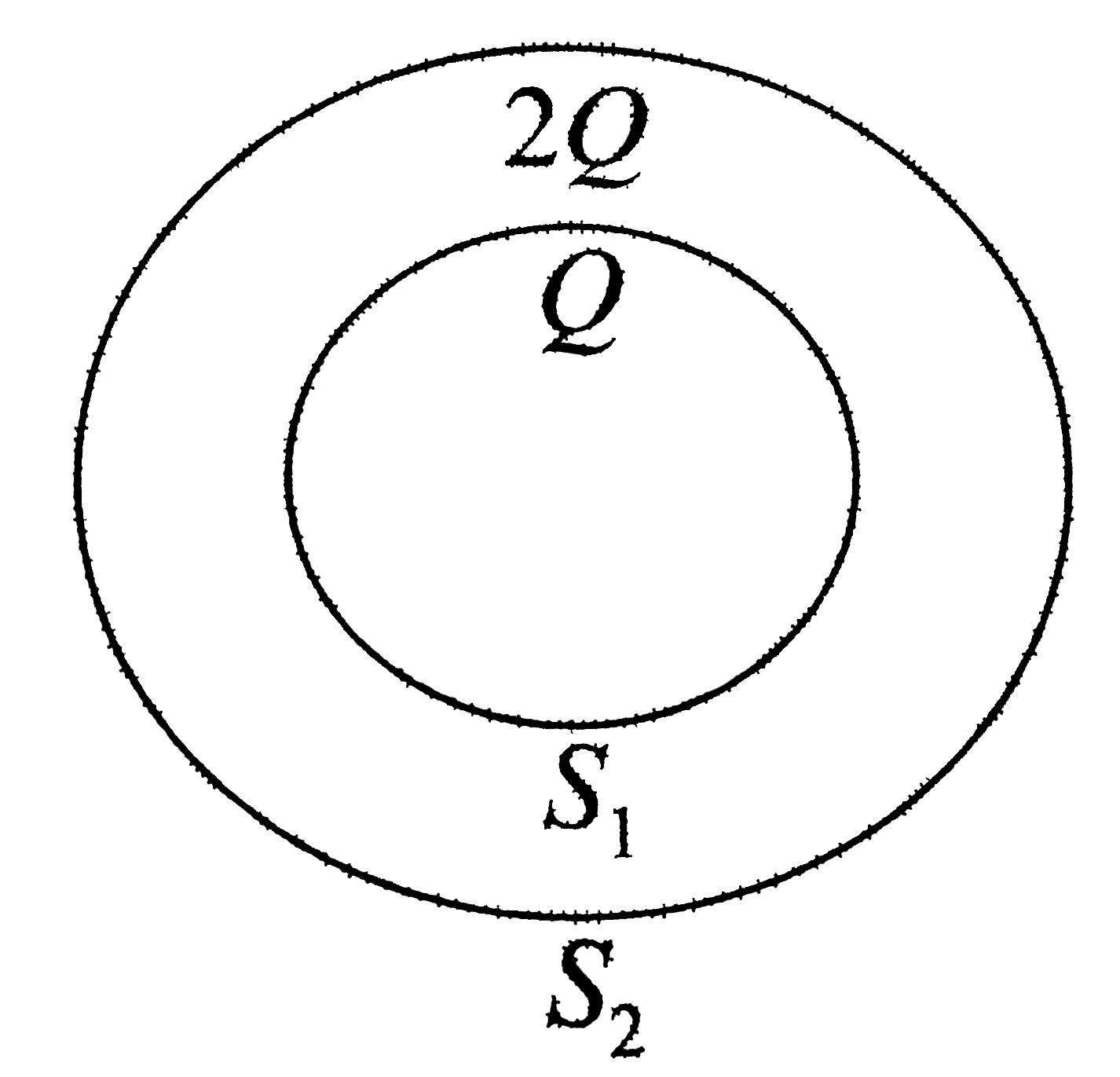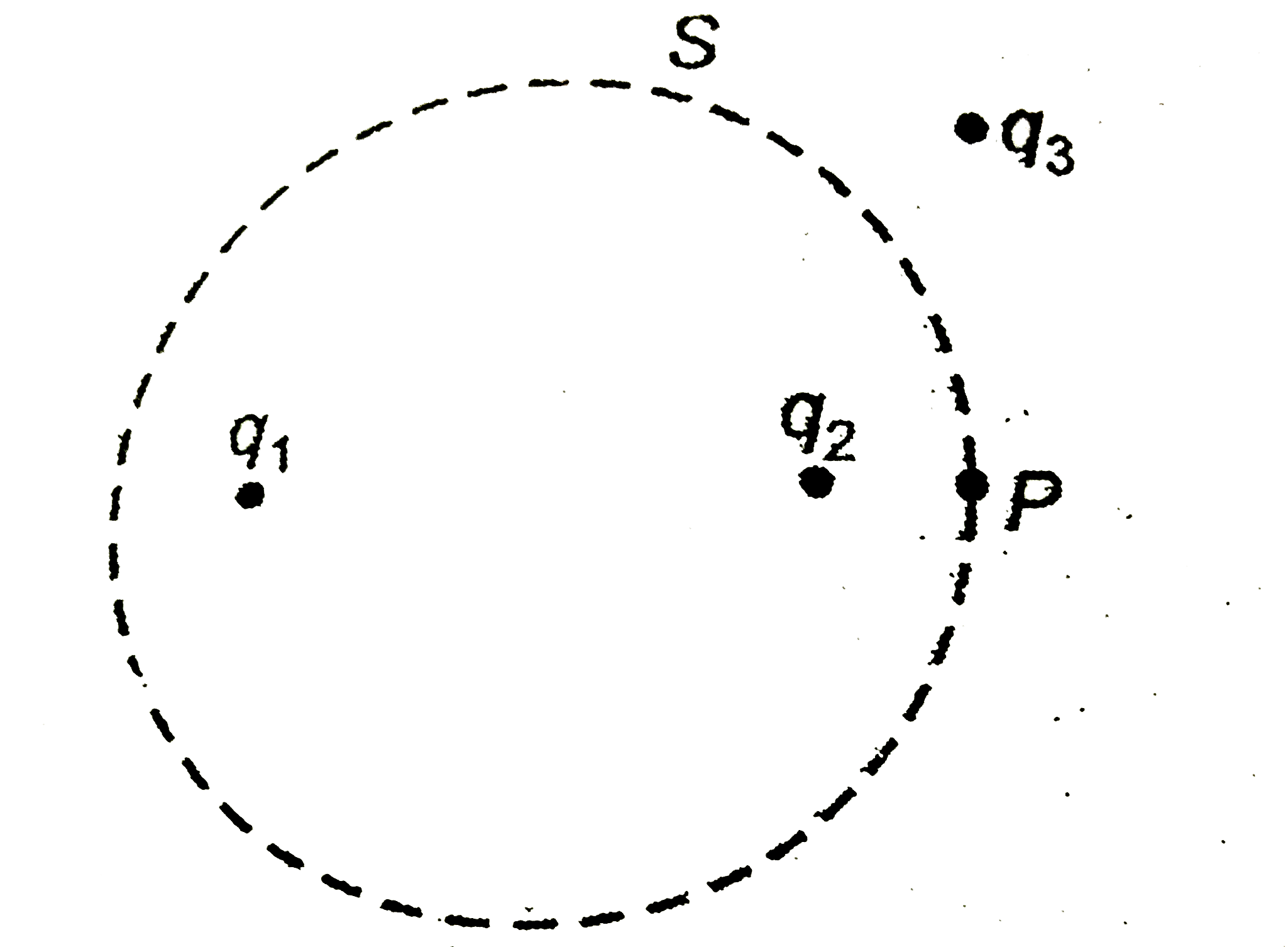Charges Q1andQ2 lie inside and outside, respectively, of a closed surface S. Let E be the field at any point on S and ϕ be the flux of E over S.
If Q1 changes both E and ϕ will change
If Q2 changes, will changes but ϕ will not change
If Q1=0 and Q2≠0, then E≠0 but ϕ=0
If Q1≠0 and Q2=0, the E=0 but ϕ≠0
The correct Answer is:A, B, C
electric fiekld at an point depends on both chares Q1 and Q2 But electric flux passing from any closed surface depends on the charged enclosed by that closed surface only
Topper's Solved these Questions
- ELECTROSTATICSBOOK - DC PANDEYCHAPTER - ELECTROSTATICSEXERCISE - Exercise 24.1
4 Videos
- ELECTROSTATICSBOOK - DC PANDEYCHAPTER - ELECTROSTATICSEXERCISE - Exercise 24.2
9 Videos
- ELECTROSTATICSBOOK - DC PANDEYCHAPTER - ELECTROSTATICSEXERCISE - Example Type 8
3 Videos
- ELECTROSTATIC POTENTIAL AND CAPACITORSBOOK - DC PANDEYCHAPTER - ELECTROSTATIC POTENTIAL AND CAPACITORSEXERCISE - (C) Chapter exercises
50 Videos
- GRAVITATIONBOOK - DC PANDEYCHAPTER - GRAVITATIONEXERCISE - All Questions
120 Videos
Similar Questions
Knowledge Check
If charge q1 and q2 lies inside and outside respectively of a closed surface S. Let E be the electric field at any point on S and ϕ be the electric flux over S. Select the incorrect option.
AIf q1 = 0 and q2≠0,then E=0 but ϕ≠0BIf q1 changes,both E and ϕwill changeCIf q2 changes, E will changes but ϕ will not changeDIf q1≠0 and q2≠0,then ϕ≠0P i sa point on an equipotential surface S. The field at P is E.
AE must be perpendicular to S in all cases .BE will be perpendicular to S only if S is a plane surface.CE canot have a component along a tangent to S.DE may have a nonzero component along a tangent to S if S is a curved surface.Assertion :- Upon the displacement of charges within a closed surface the →E at any point on surface doesn't change.
Reason :- The flux crossing through closed surface depends of location of charge within the surface.AIf both Assertion & Reason are True & the Reason is a correct explanation of the Assertion.BIf both Assertion & Reason are True but Reason is not a correct explanation of the Assertion.CIf Assertion is True but the Reason is False.DIf both Assertion & Reason are False.
Let E1 and E2, be two ellipses whose centers are at the origin.The major axes of E1 and E2, lie along the x-axis and the y-axis, respectively. Let S be the circle x2+(y−1)2=2. The straight line x+ y =3 touches the curves S, E1 and E2 at P,Q and R, respectively. Suppose that PQ=PR=2√23.If e1 and e2 are the eccentricities of E1 and E2, respectively, then the correct expression(s) is(are):
View SolutionLet E1 and E2, be two ellipses whose centers are at the origin.The major axes of E1 and E2, lie along the x-axis and the y-axis, respectively. Let S be the circle x2+(y−1)2=2. The straight line x+ y =3 touches the curves S, E1 and E2 at P,Q and R, respectively. Suppose that PQ=PR=2√23.If e1 and e2 are the eccentricities of E1 and E2, respectively, then the correct expression(s) is(are):
View SolutionS1 and S2 are two hollow concentric spheres enclosing charges Q and 2Q, respectively, as shown in figure.
i. What is the ratio of the electric flux through S1 and S2?
ii. How will the electric flux through sphere S1 change if a medium of dielectric constant 5 is introduced in the space inside S1 in place of air.
 .
.
View SolutionThree point charges are placed as shown in the figure. S is a gaussian surface ϕ is the net flux passing through surface A and E be the electric field at point P on the surface, then

View SolutionConsider two charged metallic spheres S1 and S2 of radii R and 4R, respectively. The electric fields E1 (on S1 ) and E2 (on S2) on their surfaces are such that E1E2=51 . Then the ratio V1 (on S1 ) / V1 (on S2 ) of the electrostatic potentials on each sphere is :
View Solution
